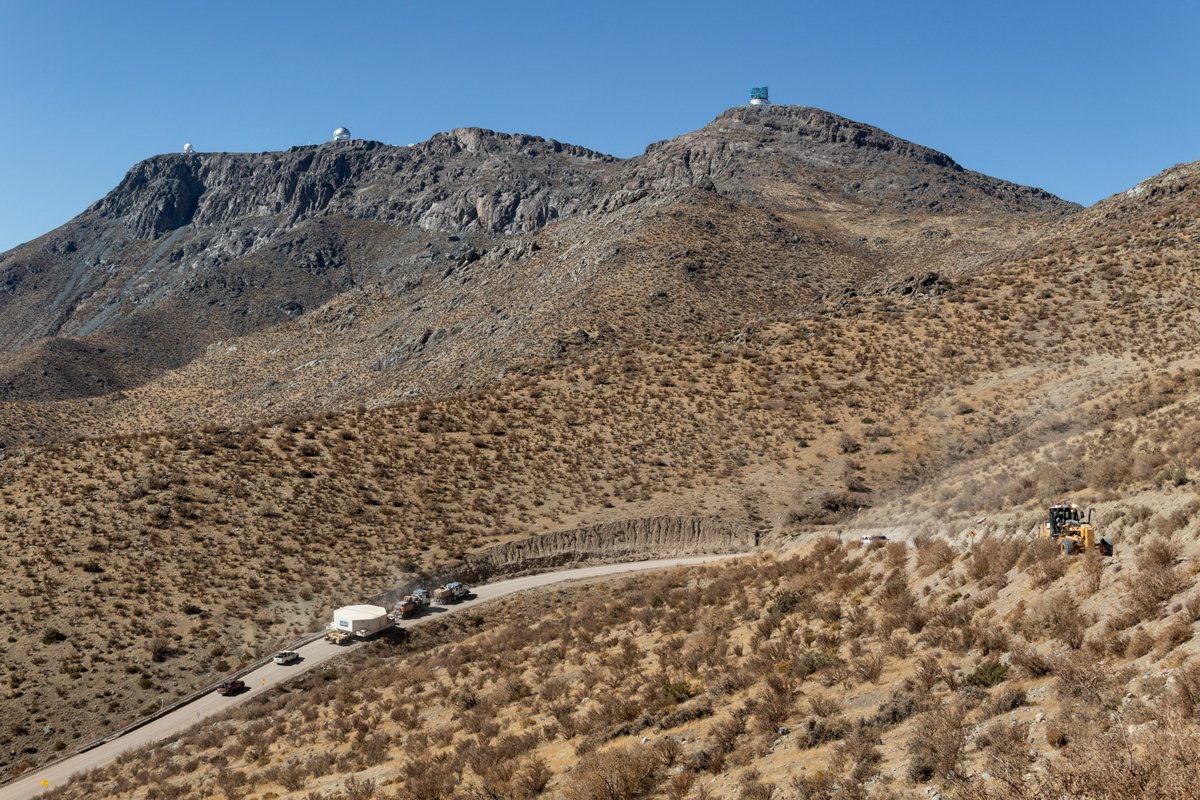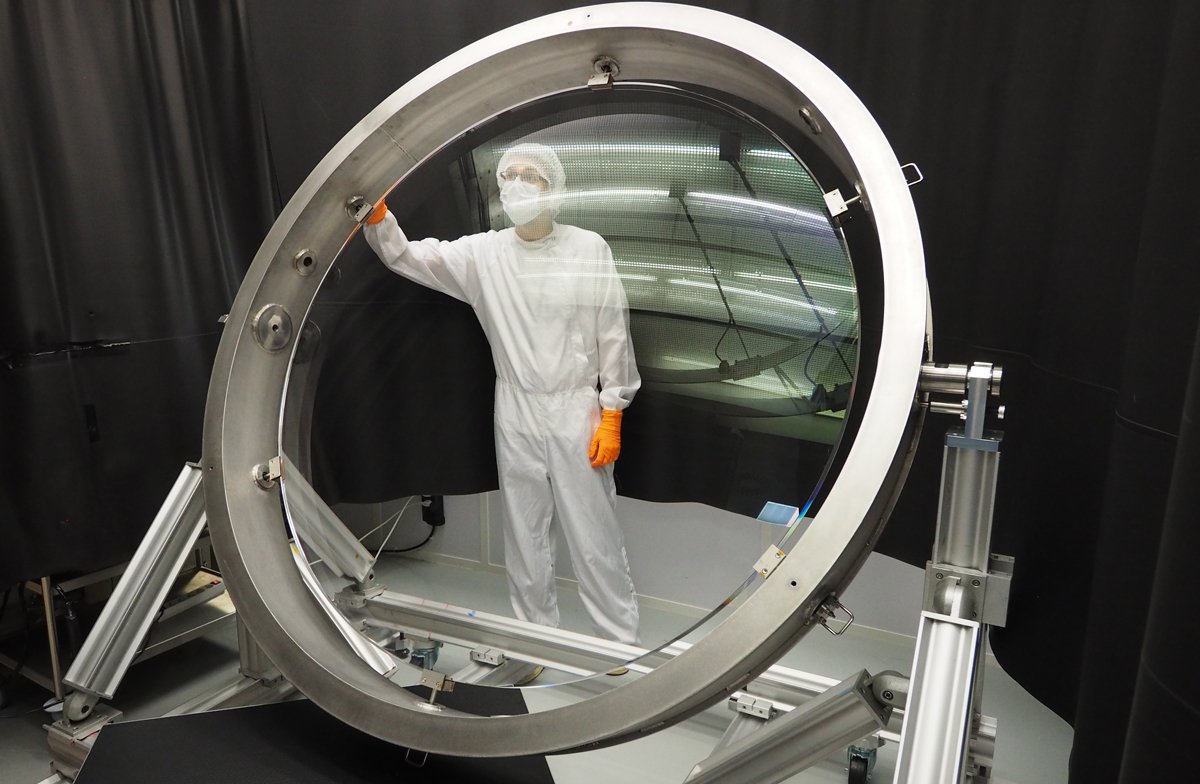Twelve Earths Site 01 announcement
Una traducción de nuestro anuncio de proyecto se puede ver aquís
Fathomers is pleased to announce Cerros Pachón and Tololo as the first site in artist Michael Jones McKean’s long-form planetary sculpture Twelve Earths
“The Rubin Observatory team is very happy to welcome Michael Jones McKean as our first Artist in Residence. We look forward to “peering into the vault of night” together and connecting science, engineering and arts, all aspects of our humanity, through this planetary-scale endeavor.”
The planet Earth is the frame for our existence and our perception of reality, yet it continues to elude us through its vast scale. Twelve Earths, developed by artist Michael Jones McKean, is a planetary sculpture that forms a new portrait of the globe by connecting twelve sites along a perfect 25,000 mile ring encircling our Earth. Twelve Earths engages with the Earth itself—the entire planet—as a form of living sculpture within the universe. A series of linked sculptural gestures and events built from inter-site research and exchange will connect the project’s diverse locations and pose questions about geologic time and kinship on a planetary scale. Twelve Earths’ vast size and yet site-specific register calls upon many minds to achieve a psycho-geographic portrait of this scope and complexity. Stretching traditional artistic authorship to its limits, Twelve Earths is shaped by an international cadre of thinkers from the biosciences, arts, linguistics, philosophy, history, and technology to propose new forms of planetary imagining.
This month, Fathomers is pleased to announce the twin peaks of Cerro Pachón and Cerro Tololo as the first site of Twelve Earths. Cerros Pachón and Tololo are arguably the most active and mythical place to observe the cosmos, and in this way, they are also poetically apt as Twelve Earths’ first announced site. Cerro Tololo holds a complex of 14 international astronomical telescopes; within eyeshot is the second peak, Cerro Pachón, where the famed Gemini South resides, as well as the nearly complete Vera C. Rubin Observatory. McKean will inaugurate a five-year artist residency with the Rubin, which houses one of the most powerful telescopes yet developed. The Rubin will receive ‘first light’ in 2024 and commence a multi-year survey of the visible cosmos, ushering in a new era of decentralized astronomy where research can be conducted simultaneously across the planet. This project will ultimately give the deepest, widest, and most complete view of the universe ever created.
The Vera C. Rubin Observatory under construction, 2019. Credit: Rubin Observatory/NSF/AURA
Science is a human-born system of logic and also of power; McKean’s work subverts an understanding of “Earth” born of nationalist conceptions of identity and geography for something more intimate and at the same time more vast. As McKean notes,
“On the ridgetops of Cerros Pachón and Tololo, we stand in the shadows of the most complex, global, and aspirational architecture humans have ever created. Each of these telescopes is the result of billions of human decisions materialized in a part, a touch, an equation, a technology, all serving to intensify our capacity to see. Rubin lives poetically on the shoulders of countless dreams and discoveries about the material world, crystallized elegantly as an eye into the early origins of cosmic matter, while also tracing a line back to the first flint tools made by early humans.”
(Clockwise) 1. Primary LSST mirror being transported to Cerro Pachón, 2019. Credit: Rubin Observatory/NSF/AURA 2. Guido Maulen, Rubin Observatory Network Engineer, installs fiber optic cables at the top of the telescope mount. Credit: Rubin Observatory/NSF/AURA | H Stockebrand 3. Aerial view of Cerro Tololo Inter-American Observatory. Credit: CTIO/NOIRLab/NSF/AURA | D. Munizaga 4. Lens L-1 of the Vera C. Rubin Observatory. Credit: SAFRAN
This announcement puts into motion a cascading set of relationships and provocations at each of the project’s twelve locations across the globe; it is the indelible process of forming these relations that shapes the planetary sculpture Twelve Earths. This ring path connects Cerros Pachón and Tololo to a nearly submerged island, a vast precious metals mine, a 15-million-year-old impact crater, a former nuclear testing ground, a primeval forest, an underwater mountain range, a landscape of wind turbines, and more, creating a truly expansive portrait of the Earth.
About the scale and form of Twelve Earths, Curator and Executive Director of Fathomers Stacy Switzer remarks,
“How do matter, materials, and understanding—of ourselves, of others, and the space between, transmute over time? While McKean’s project tests the outer limits of what we might consider sculpture, it is equally about the most intimate and fleeting of gestures and exchanges. ”
McKean adds,
“There is something exceedingly beautiful not only about the landscape at this site, but the way these observatories inscribe planetary-scale collaboration. The function of these objects is not only underwritten in what they can achieve scientifically, but their meaning as poetic, empathic, human objects. The observatories are themselves beacons, living relics for the future recording our collective desires, dreams, and accumulated knowledge.”
McKean’s sculptural installations typically explore timescales and their collapse, in the process decentering historically anthropocentric understandings of events and meaning. Twelve Earths is set up as a long-form research platform to practice knowing an object—the Earth—that will remain unknowable, in part because it explores a multitude of timescales among which the unit of a human life is only one. As timescales lengthen and contract, we inevitably enter into stranger dialogues with the geologic, the tectonic, the microbial, the subatomic, and more that the human individual may struggle to hold simultaneously. And yet, Twelve Earths is also deeply intimate: A person may experience a given site by orienting their body along the great ring and looking over the horizon. Through that movement, the person also faces, by implication, the other 11 sites. As Fathomers Curator at Large David Kim notes,
“Where once the work seemed big, it feels much smaller because it is navigable within the geography of the body. And then the work expands again, moving outward at extraordinary speed, as one becomes aware once more of the unknowability of the line and the horizon and all that lies out of sight…”
View from Víctor M. Blanco Telescope on Cerro Tololo at dusk. Credit: Michael Jones McKean









